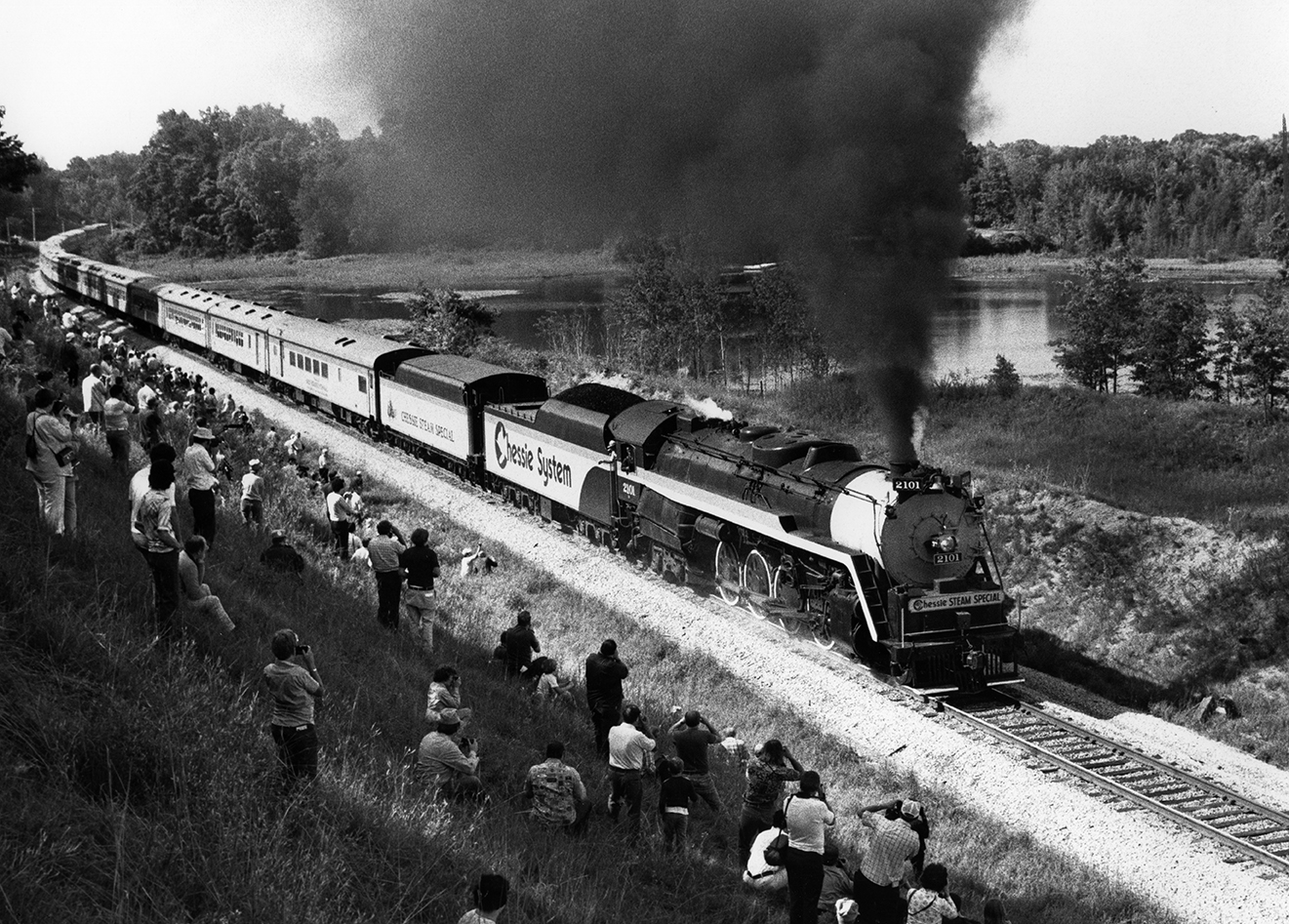The Chessie Steam Special makeover for Reading #2101 showed the difference ust a few small changes could make. I wouldn't call a Reading T-hog ugly, but they were a bit cosmetically challenged. Painted all in black, with the headlight just above the center of the smokebox and with that big Wooten firebox, they were aesthetically clumsy. Certainly no Frisco 4500 or CB&Q O-5-a.

But center up the headlight, paint the smokebox with graphite and add the Chessie Systems scheme over the running boards and tender, and suddenly its a much better looking engine.

The Reading T-1s were the masters of disguise throughout the '60s and '70s. As operated by Reading in the '40s and '50s, they were an austere all-black, with the only splash of color being the yellow border and numbering on the cab and the yellow outline and lettering on the tender. When Reading overhauled #2100, #2101, #2102 and #2124 for the Iron Horse Rambles, they added yellow to the handrails, footboards and running board skirts, painted the tires white, and added silver to the cylinder head caps.

Then in 1973, for the Delaware & Hudson's 150th anniversary, Reading #2102 was given a new smokebox door with a recessed headlamps, a pair of elephant ear smoke deflectors, and the weird D&H marker lamps and relettered as Delaware & Hudson #302. It was a surprisingly accurate facsimile of a D&H Northern. Steamtown's CP #1278 was given a much-less convincing makeover as D&H #653.

In 1975, in a mad last-minute scramble, Reading #2101 was pulled from the junkyard where she and #2100 had been sitting for the past 10+ years and was given a 30-day overhaul to get her ready for the eastern leg of the American Freedom Train, since it was discovered that SP #4449 would not fit eastern clearances.

After the AFT was completed, Ross Rowland then struck up a deal with Chessie Systems to use #2101 on their rails as the Chessie Steam Special in '77 and the Chessie Safety Special in '78, until it was damaged in the Silver Grove roundhouse fire in early '79 and swapped for C&O #614.

After that #2101 was restored back to the American Freedom Train #1 scheme and placed in the B&O Railroad Museum where it sits in a much-deteriorated state today.
























































